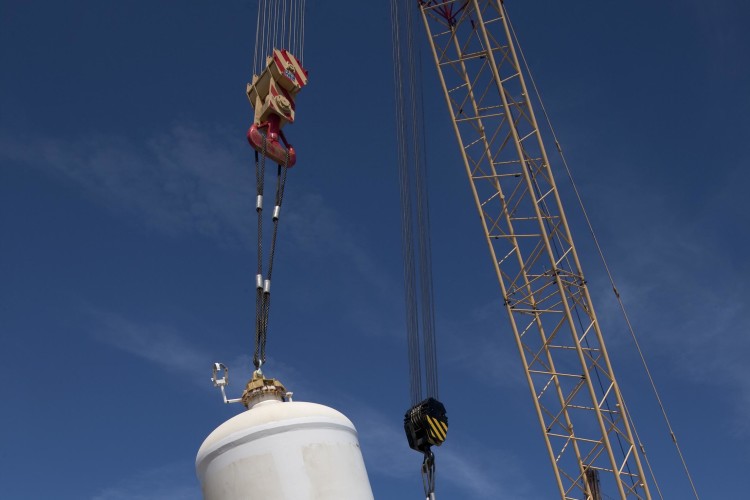Work begins on the final piece of a vast jigsaw puzzle at a former 100-acre fertiliser production site near Bristol.
In November 2009, a highly complex programme of plant decommissioning, isolation, demolition and ground remediation drew to a close at GrowHow UK Limited’s Severnside site, under the guidance of project management consultants and CDM coordinators RVA Group.
Now – having successfully supervised more than 60,000 man-hours during the initial project – RVA has been engaged by both GrowHow and American assets company Sigma Investment Holdings, L.L.C to co-ordinate the safe and precise dismantling and packaging of two remaining LCA (leading concept ammonia) plants and a utilities area, bought by Sigma for resale outside of the UK.
Following two months of RVA planning, specialist dismantling contractor EDS has been appointed by Sigma to begin the meticulous process of coding, extracting and preserving every single vessel and associated pipework for exportation. With work on site due to complete in August, this exacting project will then result in the shipping of 4,500 tonnes of ammonia production plant, in no less than 120 containers, 60 enclosed crates, 80 open stillages plus 30 outsize items of deck cargo, all ready for reassembly and return to production once it reaches its overseas destination.
RVA Group managing director Richard Vann said: “We have been employed in two capacities at Severnside. GrowHow has engaged us as specialist project managers to ensure that the high standards adopted on site to date are maintained, with no cut corners and no safety compromises.
“Sigma meanwhile has appointed us as CDM co-ordinators. There is a legal requirement for CDM-C, although Sigma was not obliged to choose RVA. However they have because of our specific knowledge of this site and our strong background in the field, for example we supervised the sequential dismantling, for relocation, of a 6,500 tonne papermaking machine in Aberdeenshire in 2008.
“It is rare for one consultancy to be appointed for both roles and there are those who might question how we could effectively represent both clients. Yet in reality it works very well because it ensures a co-ordinated approach, with common standards and universal protection of interests in a collaborative environment.”
Using the original construction designs and drawings, the team has prepared intricate methodology and processes for dismantling each individual component and match-marking it with codes for ease and accuracy of reconstruction.

With a small footprint of only 100m square in total, the specialist plant is ideal for producing ammonia in a restricted area.
Richard Vann said: “It is fortunate that the drawings are of a high standard, as this gives us a clear indication of the dimensions and weights we are dealing with – up to 116 tonnes. The biggest challenge is the logistics of actually moving people and machinery around such a restricted space.
“To a large extent we have to work inwards from the periphery, removing components as we go. As we progress through, the craneage will then have the access needed to extract some of the more intricate equipment clear and in tact on their steelwork skids.
“Smaller vessels and pipework are being tightly packed into seafaring containers, while larger components such as a range of 42 tonne PSA (pressure swing adsorption) vessels are being lifted by crane and loaded onto heavy haulage vehicles.
“Due to the design of the tank-like PSA vessels, it was necessary for EDS to manufacture a bespoke attachment to aid the lifting process. Once this shackle is connected to the top lifting point of the tank, the seal to the floor is cracked and a 450 tonne crawler crane lifts each tank clear in a vertical position. The hook of a smaller 160 tonne crawler crane is then attached to the tailing lifting point at the base of the vessels, to enable the tank to be lifted into a horizontal position for transportation.”
The LCA plants were cleaned and decontaminated as part of last year’s wider decommissioning project. However preparing them for reuse demands a secondary cleanliness review and the application of a protective coating to preserve the equipment throughout the journey, and ensure it meets the end user’s import regulations.
Other equipment being employed on the project includes a 55 tonne mobile crane, four telehandlers, five mobile elevating work platforms and a 35 tonne tracked excavator.
Once this intricate removal operation is complete, RVA will bring its three years at Severnside to a close by supervising the filling of a number of underground chambers and finally the demolition of a wooden cooling tower – the final remaining structure.
Got a story? Email news@theconstructionindex.co.uk



